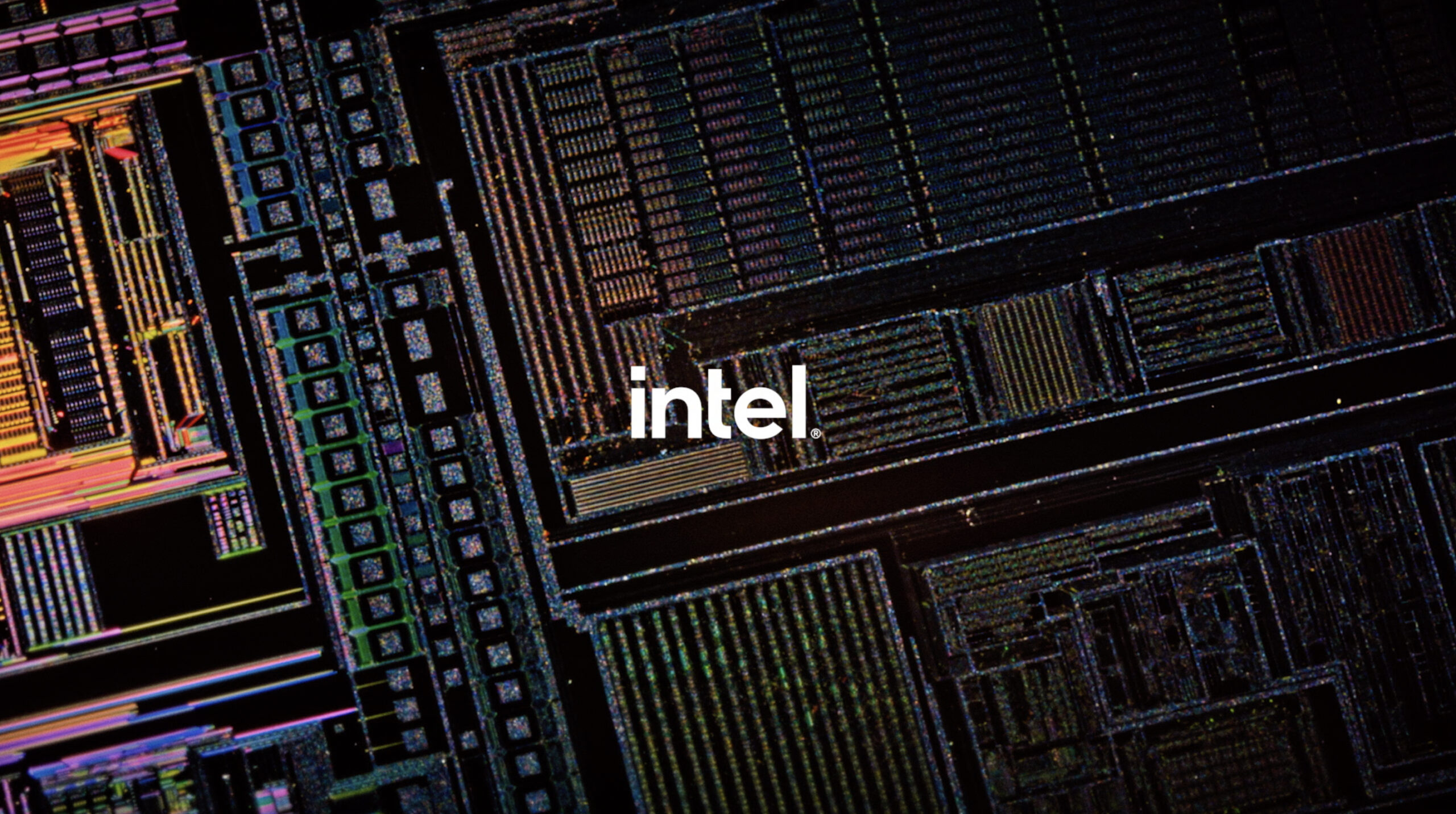Intel’s newly appointed CEO, Lip-Bu Tan, has seemingly thrown in the towel on Ai and reportedly told employees that the company has fallen out of the world’s top 10 semiconductor firms by market capitalization. More strikingly, he acknowledged that Intel is now too far behind to catch Nvidia in the rapidly evolving AI race. For a company that once defined the silicon age, this moment represents more than a strategic pivot—it’s a reckoning.
A Tech Giant in Decline
Intel’s dominance in the semiconductor space once seemed unshakable. From the Pentium era through to the early 2010s, Intel chips powered most of the world’s PCs, and its fabs were considered the gold standard. But in recent years, a combination of manufacturing delays, missed architectural leaps, and underwhelming innovation has allowed competitors to surge ahead.
Today, Nvidia has eclipsed Intel in almost every strategic growth category, particularly in AI and data center computing. Nvidia’s $4 trillion market cap is now more than ten times Intel’s. AMD, once an underdog, has become a strong rival with its Ryzen and EPYC lines. Meanwhile, TSMC, which fabricates chips for both Nvidia and Apple, leads the world in advanced node manufacturing—an area Intel used to dominate.
Tan’s internal comments reflect a hard truth: Nvidia’s lead in AI training hardware is now considered insurmountable. Its CUDA ecosystem, H100/H200 GPUs, and robust developer base have created a moat that Intel’s Gaudi line simply hasn’t been able to cross.
Massive Layoffs Signal Deeper Trouble
The sobering message from Intel’s leadership comes as the company implements widespread layoffs, eliminating thousands of jobs across California, Oregon, Texas, Arizona, and Israel. Some reports suggest up to 20% of Intel’s global factory workforce could be affected. The cuts extend to white-collar roles as well—marketing teams, automotive chip divisions, and parts of its AI teams have been downsized or outsourced.
This restructuring effort is not just about trimming the fat—it’s about survival. Intel posted a $16 billion loss in 2023, and despite some stabilization in 2024, it continues to burn through cash as it tries to modernize its manufacturing and catch up on missed technological milestones.
Shifting Focus to Edge AI and Foundry
Rather than continuing its losing battle in data center AI, Intel is now focusing on edge AI—bringing AI inference and decision-making directly onto consumer and industrial devices. This pivot includes integrating AI into CPUs (like the upcoming Lunar Lake chips), improving power efficiency, and enabling localized AI workloads without cloud dependencies.
Intel is also betting big on its foundry business, aiming to compete with TSMC and Samsung in contract chip manufacturing. Its 18A process node, expected in late 2025, will be the company’s first truly competitive offering in years. CEO Tan hinted that Intel might even embrace a fabless model, like AMD and Apple, if its internal fabs can’t keep pace—an unthinkable notion just a few years ago.
Can Intel Still Matter?
While Intel may be out of the AI training race for now, it’s too soon to count it out entirely. The company still plays a critical role in client computing (desktops and laptops), networking, and server markets. It also holds strategic U.S. importance as Washington ramps up semiconductor investment through the CHIPS Act. Intel is expected to receive billions in government subsidies to boost domestic chip manufacturing—an edge neither Nvidia nor AMD has in terms of fab capacity.
Tan reportedly told employees that Intel is in the middle of a “marathon,” not a sprint. But time and patience may be luxuries the company no longer has. As AI continues to reshape computing, Intel must execute flawlessly on its edge and foundry strategies—or risk sliding into long-term irrelevance.
What This Means Going Forward
- The Data Center AI War Is Lost (for now): Nvidia owns this space. AMD’s MI300X is also gaining traction. Intel’s Gaudi chips are struggling to gain adoption.
- Edge AI Is Intel’s New Frontier: Expect AI-focused consumer chips, like those found in upcoming Core Ultra processors, to take center stage.
- Foundry or Bust: Intel’s IDM 2.0 strategy hinges on its ability to win foundry contracts—possibly even from rivals.
- Layoffs Reflect a Leaner, Desperate Intel: These aren’t routine cuts—they’re a sign of existential change.
Intel, once the chip king, is now fighting to stay relevant in a landscape it helped build—but no longer controls.
A Look Back At The Intel Core i5-9600K @ 3.70GHz

The Intel Core i5-9600K is a desktop processor that was once popular among mid-range PC builders and gamers. Released as part of Intel’s 9th generation of CPUs, this chip offers 6 cores with a base clock speed of 3.7 GHz. While it lacks hyper-threading technology, it can boost up to 4.6 GHz for demanding tasks and includes 9 MB of L3 cache to help with performance.
This processor represents an interesting point in Intel’s lineup history, balancing cost and capability for its time. For users considering this CPU in 2025, it’s worth noting that newer alternatives now offer better performance for similar pricing. The i5-9600K still holds up for basic computing and some gaming scenarios, especially when paired with a decent graphics card.
Key Takeaways
- The i5-9600K features 6 cores with 3.7 GHz base and 4.6 GHz boost clocks, but lacks hyper-threading technology.
- Proper cooling solutions are recommended for overclocking this processor beyond its stock performance.
- Modern alternatives now offer better value, though the i5-9600K remains serviceable for basic computing tasks when properly equipped.
Specifications and Performance
The Intel Core i5-9600K processor combines solid performance specifications with efficient thermal design. This 9th generation CPU offers a balance of speed and power that makes it suitable for gaming and productivity tasks.
Core Configuration
The i5-9600K features a 6-core configuration without hyperthreading, meaning it has 6 cores and 6 threads. This design is part of Intel’s Coffee Lake architecture and represents a step up from previous generations that offered fewer cores at this price point.
The processor includes 9MB of Intel Smart Cache (L3 cache), which helps improve performance by storing frequently accessed data closer to the processing cores. This cache size is sufficient for most gaming and general computing tasks.
Intel has equipped this CPU with several modern instruction set extensions including Intel 64 architecture and Advanced Vector Extensions (AVX), which enhance performance for specific workloads like video encoding and scientific calculations.
Speed and Efficiency
The i5-9600K operates at a base clock frequency of 3.7 GHz, which serves as the processor’s standard operating speed during typical workloads. When more performance is needed, Intel’s Turbo Boost Technology 2.0 allows the CPU to automatically increase its frequency up to 4.6 GHz.
This dynamic frequency scaling helps balance performance and power consumption. The bus speed of 8 GT/s (gigatransfers per second) ensures efficient data movement between the CPU and other components.
Performance benchmarks show the processor achieving approximately 24,937 MOps/Sec and handling about 43 million primes per second. For string operations, it manages around 18,372 thousand strings per second, with memory throughput of approximately 3,264 MBytes/Sec.
Thermal Design Power (TDP)
The i5-9600K has a Thermal Design Power (TDP) of 95 watts, which represents the maximum amount of heat the cooling solution needs to dissipate during sustained workloads. This relatively high TDP indicates the processor’s performance-oriented design.
The 95W rating means users should pair this CPU with adequate cooling solutions, especially when overclocking is planned. Stock coolers are generally not recommended for this processor, and many users opt for aftermarket air or liquid cooling.
Despite its power requirements, the i5-9600K remains efficient for its performance class. The processor fits into the LGA 1151 socket and is compatible with 300-series chipset motherboards, making it a straightforward upgrade path for systems with appropriate hardware.
Compatibility and Integration
The Intel Core i5-9600K processor requires specific hardware components to function properly. Choosing compatible motherboards, memory, and storage solutions ensures optimal performance and system stability.
Motherboard and Chipset Support
The i5-9600K works exclusively with motherboards that have an LGA 1151 socket and Intel 300 series chipsets. Z390 motherboards offer the best compatibility and features for this processor, providing full support for its capabilities including overclocking potential.
While H370 and B360 chipsets can also accommodate the 9600K, they limit overclocking abilities. This restriction prevents users from pushing the processor beyond its base frequency of 3.7 GHz or its turbo boost of 4.6 GHz.
For optimal performance, motherboards with robust VRM (Voltage Regulator Module) designs are recommended, especially when utilizing the processor’s unlocked multiplier for overclocking. BCLK adjustments are also possible on Z390 boards, offering additional performance tuning options.
Memory and Storage Solutions
The i5-9600K supports dual-channel DDR4 memory with speeds typically ranging from 2666 MHz to 3200 MHz. Higher memory frequencies can improve performance in memory-intensive applications and games.
Most users find 16GB of RAM sufficient for gaming and productivity tasks with this processor. The memory controller integrated into the CPU handles data transfer between RAM and processor cores.
Intel Optane Memory is fully supported, creating a fast caching solution that can accelerate traditional hard drives. This technology bridges the performance gap between SSDs and HDDs.
For storage, the processor works with both SATA and NVMe drives. Z390 motherboards typically offer multiple M.2 slots for high-speed NVMe SSDs, taking advantage of the platform’s PCIe lanes for faster data transfer speeds.
Overclocking and Tuning
The Intel Core i5-9600K is a popular choice for overclocking enthusiasts due to its unlocked multiplier. This feature allows users to push the CPU beyond its base 3.7GHz and boost clock of 4.6GHz.
Many owners have successfully overclocked their i5-9600K to 4.8-5.0GHz with proper cooling solutions. The process typically involves gradually increasing the CPU frequency in small increments while testing for stability.
Basic Overclocking Steps:
- Increase the frequency by 100-200MHz
- Run stress tests to verify stability
- If stable, continue increasing in small increments
- If unstable, increase voltage slightly or reduce frequency
The i5-9600K lacks hyperthreading compared to its bigger sibling, the i9-9900K, but it compensates with excellent overclocking potential at a lower price point.
One effective approach is undervolting while maintaining higher frequencies. Some users report success with a -50mV offset while keeping the CPU at 4.6GHz, which reduces both power consumption and temperatures.
Overclocking Tools:
- BIOS/UEFI settings (recommended)
- Intel XTU (Intel Extreme Tuning Utility)
- Third-party software like MSI Afterburner
Power consumption increases significantly with overclocking. At stock settings, the i5-9600K has a TDP of 95W, but this can easily rise to 120-150W when overclocked.
BCLK (base clock) adjustments are possible but generally unnecessary for the i5-9600K since the multiplier is unlocked. Most users achieve better results by simply adjusting the multiplier.
Intel Technologies and Software
The Intel Core i5-9600K processor comes with several proprietary technologies and software solutions that enhance its performance. These features help users get the most out of their CPU through integrated graphics capabilities and specialized software optimizations.
Intel Graphics and Media
The Core i5-9600K includes Intel UHD Graphics 630, which provides basic display functionality without requiring a discrete graphics card. This integrated GPU supports multiple displays and can handle everyday computing tasks, media playback, and casual gaming at lower settings.
The graphics component supports DirectX 12, OpenGL 4.5, and can decode 4K video content efficiently. For media creators, the integrated graphics offers Quick Sync Video technology, which accelerates video encoding and transcoding tasks.
Users can download the latest Intel Graphics drivers from Intel.com to ensure optimal performance and compatibility with newer applications and games. The integrated solution is particularly valuable as a backup display option or for systems where power efficiency is important.
Software Optimization
Intel provides various software tools to maximize the i5-9600K’s performance. The Intel Extreme Tuning Utility (XTU) allows users to overclock their processor safely, adjusting core frequencies, voltage, and monitoring temperatures to achieve higher performance.
Intel also offers processor-specific instruction sets like SSE (Streaming SIMD Extensions) and AVX (Advanced Vector Extensions) that software developers can utilize to improve application performance. These instruction sets accelerate tasks like media processing, scientific calculations, and AI workloads.
The Intel Driver & Support Assistant helps keep system drivers updated automatically. This tool scans the system and notifies users when new drivers are available for their i5-9600K processor and other Intel components.
For developers, Intel offers performance libraries and compilers that can optimize code specifically for the Coffee Lake architecture found in the i5-9600K, ensuring software runs efficiently on this CPU generation.
Frequently Asked Questions
The Intel Core i5-9600K processor offers several performance features and capabilities that appeal to gamers and power users. These commonly asked questions address specifications, benchmarks, and overall value.
What specifications define the performance of the i5-9600K processor?
The Intel Core i5-9600K comes with 6 physical cores and 6 threads. It has a base clock speed of 3.70 GHz and can boost up to 4.60 GHz when needed.
The processor includes 9MB of cache and works with a 95W TDP (Thermal Design Power). It supports up to 128GB of dual-channel DDR4 memory.
The “K” designation indicates that this processor has an unlocked multiplier, making it suitable for overclocking when paired with a compatible motherboard.
How does the i5-9600K compare in benchmarks against its competitors?
According to UserBenchmark data, the i5-9600K performs exceptionally well for desktop users. It offers strong single-core performance that benefits gaming applications.
The processor provides sufficient multi-core performance for most tasks, though it may not match higher-end processors for intensive workstation applications. In gaming scenarios, it can deliver solid framerates at various settings.
Some users report the processor reaching 85-100% utilization in demanding games, which is expected for a 6-core processor running modern titles.
Which generation does the i5-9600K processor belong to?
The Intel Core i5-9600K belongs to Intel’s 9th generation of Core processors. This generation uses the Coffee Lake Refresh architecture launched in late 2018.
The 9600K uses the LGA 1151 socket and works with Intel 300 series chipsets. It’s built on Intel’s 14nm manufacturing process.
Is the i5-9600K suitable for high-end gaming experiences?
The i5-9600K can handle most gaming demands well, especially when properly cooled. Its strong single-core performance benefits many games that don’t fully utilize multiple cores.
Some users report the processor running games at high framerates, though very demanding titles may push it to near 100% utilization. The ability to overclock helps extend its gaming performance.
For optimal gaming, pairing the i5-9600K with a capable graphics card is essential. The processor itself rarely becomes the primary bottleneck in most gaming scenarios.
What are professional reviews saying about the i5-9600K’s capabilities?
Professional reviews consistently highlight the i5-9600K’s strong performance-to-price ratio. Many reviewers praise its gaming capabilities and everyday multitasking performance.
According to search results, the processor is described as “almost unbeatable for desktop users” with “sufficient multi-core performance” for most tasks. It handles demanding applications well but may struggle with extremely intensive workstation tasks.
The overclocking potential receives positive mentions, though proper cooling solutions are recommended when pushing beyond stock frequencies.
What is the price range for the i5-9600K in the current market?
As of March 2025, the i5-9600K is primarily available on the secondary market since it has been succeeded by newer generations. This has affected its pricing substantially.
Prices generally range from $120-180 USD depending on condition and seller. New old stock (unopened boxes) typically commands higher prices than used units.
The value proposition has changed with newer generations available, but the i5-9600K remains popular for budget builds using compatible motherboards that users may already own.







